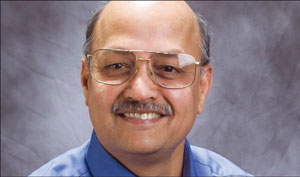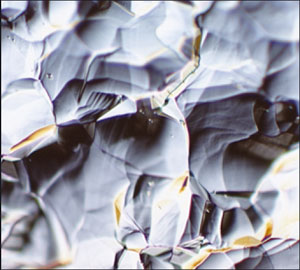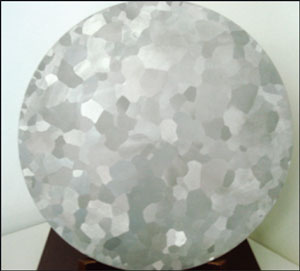Nearly a half-century ago, researchers at Stanford University began investigating superconducting RF (SRF) acceleration. They would not have been surprised to learn that by 1994, SRF had come into large-scale use in Jefferson Lab’s Continuous Electron Beam Accelerator Facility, or that by 2008 it was planned as the enormous, ultra-cold, dynamic-but-delicate heart of the proposed International Linear Collider (ILC). Nor would they be surprised to learn that this complex technology’s challenges nevertheless continue to vex accelerator builders. In my view, it’s time for the accelerator community to go back to where the pioneers at Stanford began, hit the pause button, and take a careful look at more than four decades of SRF R&D.

Image credit: Jefferson Lab.
Such a renewed learning effort is needed because SRF technology is not only complex and vexing, it’s vital and expensive. Some 16,000 SRF accelerating cavities will be made for the ILC from hundreds of tons of the soft, ductile metal niobium, which becomes superconducting when refrigerated to nearly absolute zero. This is a major component of the ILC’s immense cost.
Niobium-based SRF is also in use or in planning at other projects – for example, Oak Ridge National Laboratory’s Spallation Neutron Source, Fermilab’s Project X, the Facility for Rare Isotope Beams, compact accelerators for university laboratories, accelerator-driven systems for nuclear power production in India, DESY’s XFEL, and energy-recovering linear accelerators driving fourth-generation light sources, such as Jefferson Lab’s free-electron laser.

Image credit: DESY.
Though condensed-matter physicists participated when the field began at Stanford, SRF has long since become highly specialized – maybe even too highly specialized. SRF scientists devote careers to the study of elaborate cavity design and preparation processes. Much effort has gone into development and assessment of techniques that have become standard in SRF, such as buffered chemical polishing, electropolishing and high-pressure rinsing of niobium surfaces. Much effort has been expended to overcome or circumvent the contamination problems introduced in pumping to attain the stringent vacuum conditions needed for superconducting operation.
Many of these efforts have involved, or have even begun with, the issue of the purity of the niobium material. Yet if you look back, you find that during the 1960s, Stanford’s pioneers used niobium of a purity that was not even known. The metal was electron-beam melted into the ingots from which cavities were machined. Without even addressing the purity issue, those early researchers demonstrated high performance and very high quality factors in one type of SRF cavity, the X-band pillbox cavity.
Later, to reduce the cost of larger L-band SRF cavities, researchers at Stanford switched to fine-grain niobium sheets, using 1800 °C annealing to increase the grain size – that is, to enlarge the crystals giving structure to the metal. By reducing the availability of cracks between grain boundaries, this enlargement crucially reduced the potential for hydrogen inclusion in those cracks. Hydrogen, both in the cracks and directly on the material surface, is recognized today as SRF’s major performance limiter.

Image credit: CBMM Brazil.
The use of high-purity niobium was not specified until later, although in the 1970s Siemens in Germany used fine-grain niobium of low purity, and demonstrated state-of-the-art peak surface magnetic fields – at levels that would still be impressive today. Researchers at Siemens enlarged the fine-grain structure with 1400 °C annealing, which led to a grain size so large as to have visible boundaries – and thus led also to a reduction in the grain-boundary inclusion of performance-degrading hydrogen.
Thanks to empirical results on three continents, it has now become apparent that SRF can progress using niobium ingot slices of merely moderate purity – that is, niobium with relaxed purity specifications, quite similar to the ingot niobium used originally at Stanford. Optimized and streamlined processes can eliminate or reduce the surface-included hydrogen, resulting in high-performance accelerator structures at reduced cost. This could mean savings of perhaps as much as a few tens of percent on ILC’s SRF cavities, and substantial operational cost savings too.
In other words, SRF’s efforts have now come full circle. The SRF researchers who followed Stanford’s original initiative have done fine work. They have made astute choices based on what they could see. But we now have a half-century of work that we can survey. The time has come to re-assess this entire R&D history. Anything less will fail to do justice to the future of accelerators – and to the future of physics itself.







